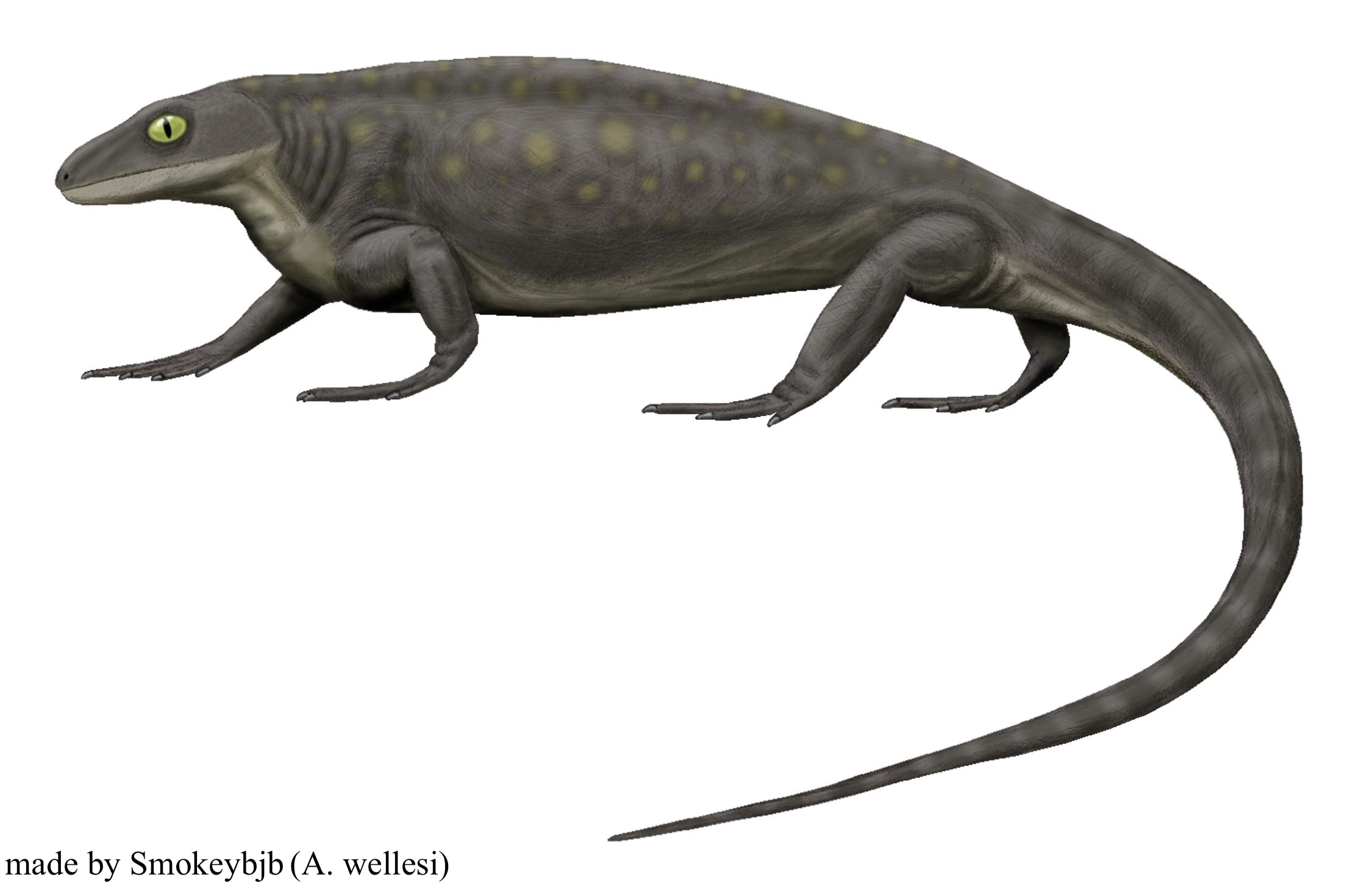Welcome to Aerosaurus

Name Definition
Copper lizard
Name Given By
A. greenleeorum/Alfred S. Romer in 1937, A. wellesi/Langston & Reisz in 1981
Location
Abo/Cutler Formation in New Mexico
Classification
Synapsida, Eupelycosauria, Varanopidae, Varanopinae
Size
approximately 75 cm - 1 meter long (29 - 39 inches)
Temporal Range
Asselian stage of the Cisuralian epoch in the Permian, ~295 million years ago
Ecological niche
small and agile carnivore (A. wellesi), niche of A. greenleeorum is still being debated
Species/Sub Species
A. greenleeorum (type species), A. wellesi
Diet
While the dentition of A. greenleeorum has caused many questions about its diet, A. wellesi had a humerus similar to length with its femur and hind limbs ; This would have given it a high posture and long strides to pursue prey
Introduction
Aerosaurus is a genus of varanopid synapsids that lived in New Mexico during the Early Permian. Aerosaurus is thought to have been an ancestor to many varanopids like Varanops itself, though it is still being debated whether they consumed the same food. The dentition of Aerosaurus can be described as sharp and curved backwards like a predator, however, their arrangement is very odd. These teeth were observed to have been tightly packed together forming a kind of saw blade. This special arrangement of dentition could mean that either it had a special method of feeding like a filter feeder, or it used these saw-like teeth to strip off fronds from plants low lying plants. In addition to this herbivorous theory, Aerosaurus has relatively long ribs for its size which possibly denotes the fact that it had a potbelly with more room for a digestive system like most herbivorous animals to process plant material. Aerosaurus is also noted to have quite a long tail, longer than most synapsids and is almost half of its body length. While the diet of A. greenleeorum is a mystery, most scientists have noticed that the second species, A. wellesi, has a humerus length as long as the femur, indicating that A. wellesi would have a high posture and could perform long strides along with its long tail to chase down prey. Aerosaurus lived in the Abo/Cutler Formation which was a very open but arid environment with many other Permian lifeforms like lungfish, palaeoniscids (fish from the family Palaeoniscidae which possess a bony skeleton), temnospondyl and lepospondyl amphibians, and diadectomorphs (tetrapods from the clade Diadectomorpha that have been classified as advanced reptiliomorphs which means they were closely related to reptiles but weren’t true ones). Above is an image of Aerosaurus wellesi.
